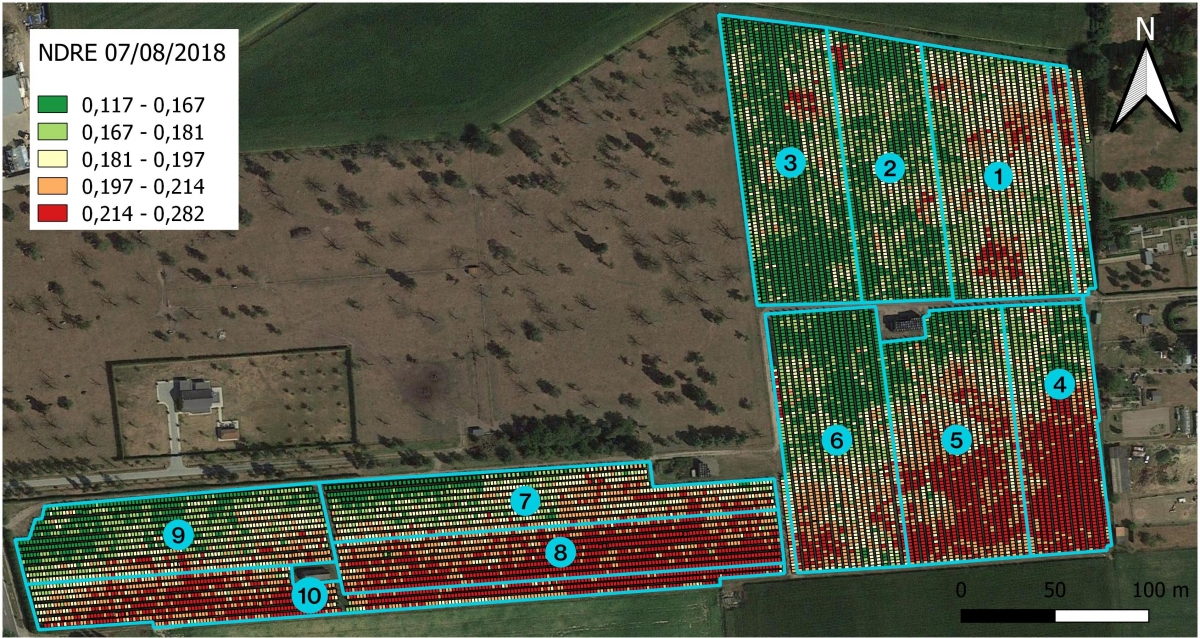Published on 21 October 2022
In order to meet the current crisis in the Flemish-Dutch fruit sector, fruit growers are looking for solutions to improve their profitability. Precision agriculture is one of the ways to create a competitive advantage while ensuring improved sustainability.
By means of variable rate applications, resources are only used where, when and as much as actually needed, taking into account variation in time and space. The optimum yield of a quality product can thus be achieved with a minimum input of resources.

Drones are used to map flower intensity and vegetation indices relevant with regard to precision fruticulture.
The STEREO III project INTELLI-FRUIT is a 'shared cost' project, i.e. a project that allows co-financing for a Belgian partner, such as a private company, under certain conditions. In this case, VITO partnered with the company Pcfruit to evaluate the potential and added value of precision farming for the fruit sector. Within the framework of the project, various applications of precision fruticulture were tested and developed. Soils, crops and fruit development were monitored using soil scans and drone imagery.

The Normalized Difference Red Edge Index (NDRE) per tree calculated from multispectral drone imagery shows variability between irrigation units in pear orchard “Rummen”.
First, an automated processing chain was developed for converting raw drone data into easy-to-interpret maps representing different crop indices per tree. The team then:
- developed algorithms to calculate blossom intensity from drone images and to predict the yield of a pear orchard;
- observed a relationship between multispectral vegetation indices calculated from the images and the efficiency of irrigation systems;
- measured the apparent electrical conductivity of the soil (by soil scanning), which variation often appeared to have a major influence on pear yield and quality.

Comparison between the soil map of Flanders (left) and soil scanning results (right) for pear orchard “Wimmertingen” in the dashboard for precision fruticulture.
The team then applied the generated knowledge and tested various rate applications, such as irrigation, fertilisation, thinning and pruning (of the above-ground and root parts). By comparing variable rate management with conventional uniform rate management, the payback period for the fruit grower was analysed and resource efficiency was determined. The results show that precision fruticulture is especially of interest for larger orchards whith high variability in crop growth, fruit yield and/or fruit quality.
Finally, in order to bring precision fruticulture to practice, an online dashboard was developed with which fruit growers can visualise mapped data from their orchards. In this way, they have free access to soil maps and satellite images, they can consult the results of soil scans and drone flights and compare all data sources in a centralized way.
More information
STEREO III project INTELLI-FRUIT (Intelligent Fruit Cultivation)
